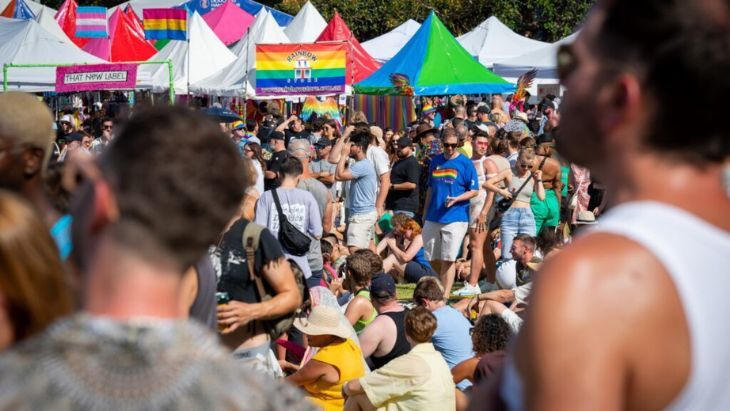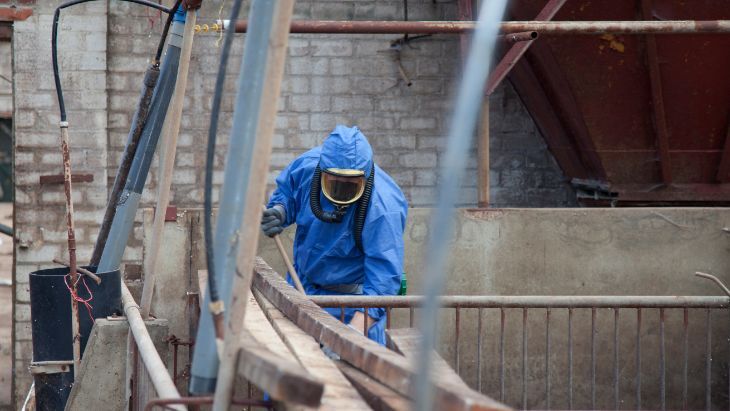
Asbestos doesn't sound very friendly and in all truth, it isn't. ICYMI, there has been a slew of asbestos discoveries in Sydney, which has, understandably, whipped many parents into a frenzy about the potential health impacts of asbestos exposure.
Here's what you need to know about the recent spate of asbestos discoveries in Sydney.
Asbestos in Sydney: What You Need to Know
If you've been following the news, you'll know that several public parks in Sydney have temporarily closed due to the detection of asbestos in the mulch at various locations.
Friable (airborne) asbestos was detected in the mulch at Harmony Park in Surry Hills, where people and their pets were present earlier in the day. Additionally, bonded asbestos was found in mulch at Victoria and Belmore parks.

These recent findings come after asbestos was identified at other locations, including Rozelle parklands, railway substations in Dulwich Hill, Canterbury, and Campsie, along with areas along the Prospect Highway, and at Campbelltown Hospital and Liverpool West Public School.
Since then, additional sites have been identified with asbestos contamination, including various transport infrastructure projects, schools, supermarkets, and hospitals.
Most of the samples collected have been of bonded asbestos, which means it's mixed with a harder substance like concrete, making it less immediately hazardous as the particles are less likely to become airborne. All the contaminated mulch originated from Greenlife Resource Recovery, a landscaping products manufacturer. Despite this, Greenlife maintains that the mulch leaving their facility has tested negative for asbestos.
Safe to say, experts are worried that this is just the tip of the iceberg, and NSW Premier, Chris Minns, has said the Environment Protection Authority (EPA) is examining hundreds of sites as it undertakes its largest investigation ever.
Locations where asbestos-contaminated mulch has been confirmed by the NSW EPA
Courtesy of Guardian Australia
-
Rozelle Parklands – 17 locations in and around the park
-
Two sites along the Prospect Highway project between Prospect and Blacktown
-
Electricity substation at Dulwich Hill railway station
-
Electricity substation at Canterbury railway station
-
Electricity substation at Campsie railway station
-
Belmore railway station in a landscaped area near the car park
-
Punchbowl railway station in the railway corridor
-
Nowra Bridge
-
Regatta Park in Emu Plains
-
Liverpool West public school
-
Campbelltown hospital
-
Belmore Park in Haymarket
-
Victoria Park in Camperdown
-
Harmony Park in Surry Hills (friable asbestos)
-
The Parramatta light rail project in Telopea
-
St John of God Hospital in North Richmond
-
Woolworths in Kellyville
-
Transport for NSW park in Wiley Park
-
Allambie Heights Public School
-
Munn Park in Millers Point
-
Two residential estates under construction in Sydney’s south-west (not publicly accessible)
-
Penrith Christian School in Orchard Hills
-
St Luke’s Catholic college in Marsden Park
-
Three sites that the EPA said were “not being identified for privacy reasons”
-
Domremy College in Five Dock
-
Aldi Supermarket in Cobbitty
-
Riverstone Sports Centre in Riverstone
-
Bicentennial Park 1 in Glebe (friable asbestos)
-
North Rosebery Park in Rosebery
-
A private aged care facility in St Ives
-
An industrial area in Rouse Hill
-
A private property
-
Mary Mackillop Catholic Parish in Oran Park
-
Allambie Heights Public School
-
Domremy College in Five Dock
-
Liverpool West Public School
-
Penrith Christian School in Orchard Hills
-
St Luke’s Catholic College in Marsden Park
What is Asbestos and What is it Used For?
So, the question on everybody's lips—what...ya know...IS asbestos?
Put simply (sort of...), asbestos is a naturally occurring mineral composed of small, needle-like fibres that are known for their resistance to heat, electricity, and corrosion.
Asbestos has been a material commonly used in various products like cement sheeting, roofing, pipes, and automotive parts like brakes and clutches. In the 1960s and 1970s, loose fibre asbestos was even used in home roof insulation across NSW.
While Australia was once a major user of asbestos globally, the country took significant steps to phase out its use, ultimately banning asbestos-containing products in the 1990s, with a complete ban implemented in 2003.
But why is it dangerous?
The Potential Impact of Asbestos

So, the main issue here—what will happen if someone is exposed to asbestos over a prolonged period?
Well, if asbestos remains bonded and is left undisturbed, generally the chance of significant health risks is low. However, if you are exposed to high levels of friable (airborne) asbestos, it can take anywhere from 15-30 years from the exposure to the development of asbestos-related illnesses, which makes it a tricky beast to test for.
When asbestos fibres are breathed in over an extended period, it can pose health risks such as mesothelioma, a type of cancer, and asbestosis, a chronic lung condition. Mesothelioma occurs when asbestos fibres enter the mesothelium, the lining of the lungs that enables breathing movements, while asbestosis develops from prolonged exposure to asbestos dust, leading to breathlessness, particularly during physical exertion.
Asbestos Action Steps
If you ever have concerns about possible asbestos exposure, reach out to your local council or workplace right away. If you suspect asbestos in your home, it's wise to seek assistance from a licensed asbestos assessor or removalist, who has the expertise to assess and manage any asbestos-related issues safely.
Eeep. Watch this space, folks...
Hero image: The Daily Aus
More Newsy Reads
Ham and Cheese Toasties Banned in Schools: Nutrition Overreach or Healthy Move?
The Swift Effect: Why Taylor's Tour Is Music to Parents' Ears
Understanding School Zone Rules in Australia: The Ultimate No-BS Guide
Have you signed up for our newsletter? Join ellaslist to get the best family and kid-friendly events, venues, classes and things to do NEAR YOU!
Reviews



 Pick a Date
Pick a Date


